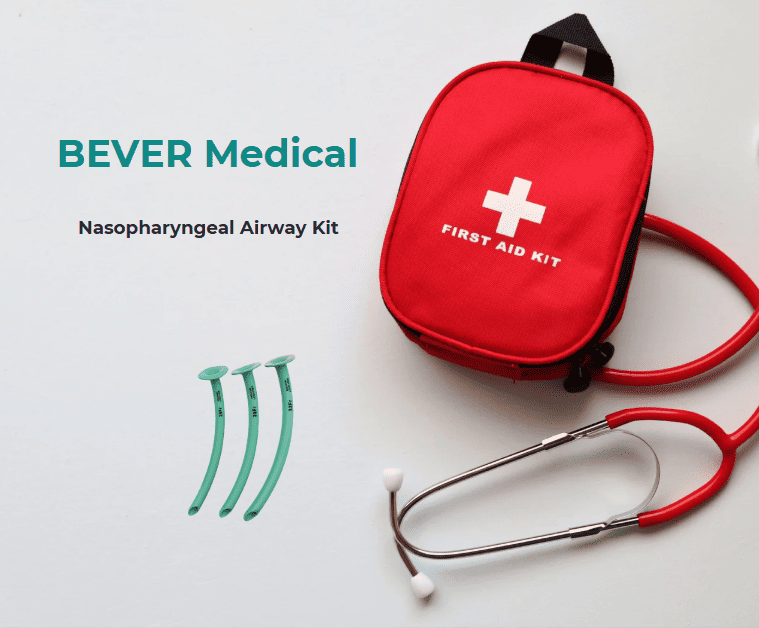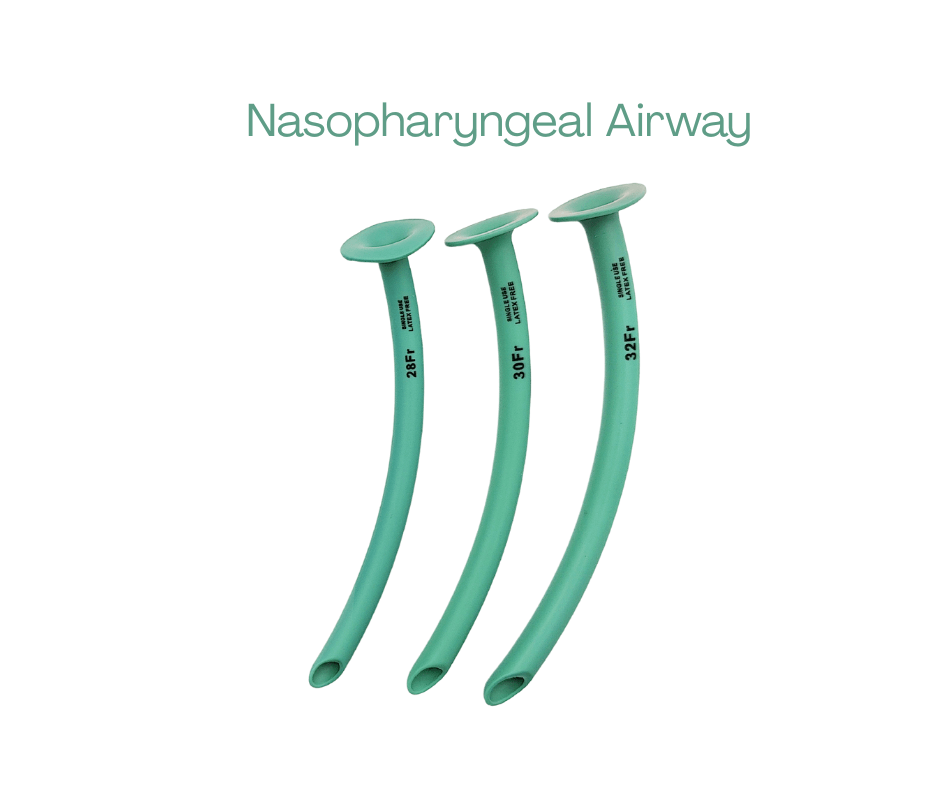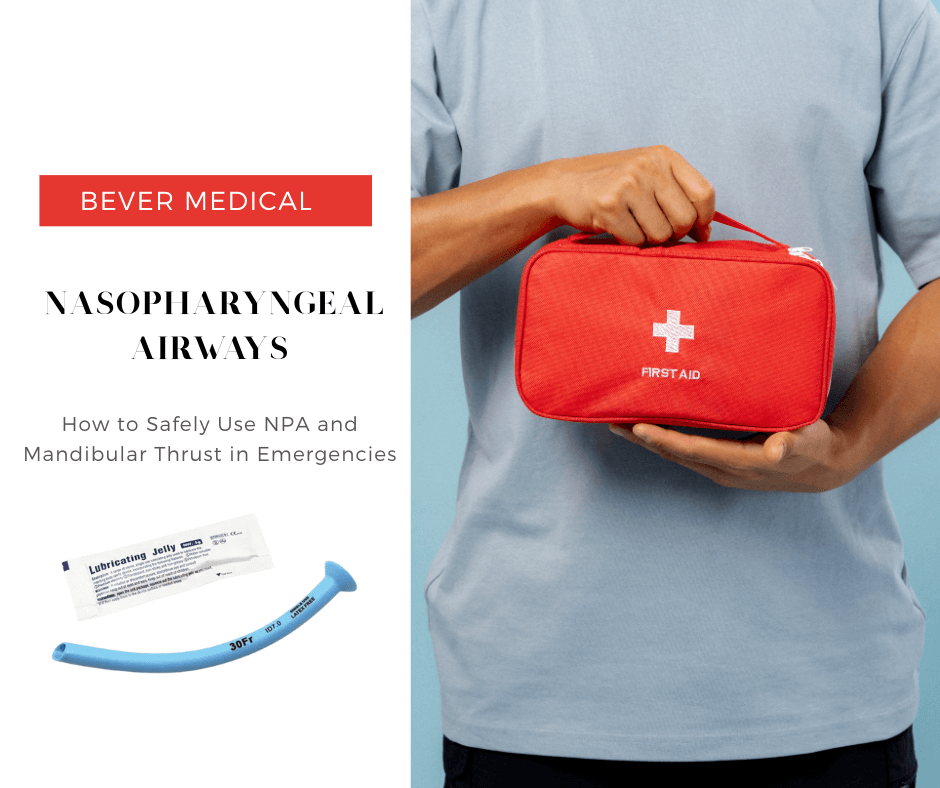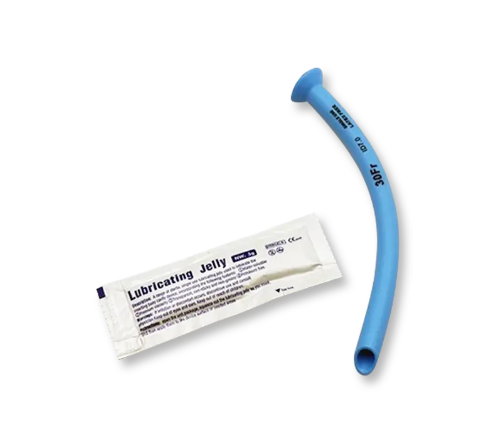In remote locations where medical support is miles—or hours—away, having the right tools can mean the difference between life and death. A nasopharyngeal airway kit is one of the most essential components in any well-stocked wilderness or tactical first aid pack. Designed to maintain an open airway in unconscious or semi-conscious patients, this simple yet effective device is a cornerstone of emergency airway management—especially when jaw trauma, clenched teeth, or limited access makes oral airways unfeasible. But knowing how to use it is only half the equation. Choosing the right material and size for your nasopharyngeal airway (NPA) is just as critical. In this guide, we explore why the NPA kit is indispensable in field conditions and how to select the most suitable type for your needs. Why Use a Nasopharyngeal Airway Kit in Field Emergencies? When someone becomes unconscious—due to trauma, heat exhaustion, low oxygen, seizure, or cardiac arrest—their tongue may relax and block the airway. In such situations, quick insertion of an NPA can: Prevent airway obstruction Support spontaneous breathing Buy time until advanced help arrives Avoid unnecessary intubation attempts In outdoor settings where dust, dirt, and debris can complicate airway access, NPAs are favored for their ease of insertion and minimal need for head positioning. They are particularly valuable in environments where cervical spine injury is suspected, and head-tilt maneuvers must be avoided. What's in a Nasopharyngeal Airway Kit? A standard field-ready NPA kit typically includes: A soft, pre-lubricated or lubricated nasopharyngeal airway tube Sterile, water-soluble lubricant Optional: gloves and alcohol wipes Compact, sterile packaging that fits easily in an IFAK or field pouch Many kits come pre-lubricated or include a lubricant sachet, ensuring smooth insertion even under high-stress conditions. Choosing the Right Material: PVC vs. Silicone vs. Latex-Free There is no one-size-fits-all NPA, especially when considering comfort, flexibility, and environmental adaptability. Here's how to decide: PVC (Polyvinyl Chloride) Pros: Cost-effective, slightly firm for easier insertion Best for: Single-use, rugged environments where durability matters Caution: May become stiff in cold weather; check if latex-free if needed Silicone Pros: Ultra-soft, biocompatible, maintains flexibility in cold temperatures Best for: Reusable settings, sensitive patients, cold weather or altitude use Caution: Typically more expensive Latex-Free NPAs Pros: Safe for patients with latex allergies, compliant with hospital and military standards Best for: Broad use without allergy risk Caution: Check materials if not explicitly marked as latex-free For field kits used in cold climates or tactical operations, silicone NPAs offer better flexibility and reduced patient discomfort. For mass-distribution or civilian IFAKs, PVC versions are a practical and economical choice. Choosing the Right Size Selecting the correct NPA size is essential for both efficacy and safety. Improper sizing may lead to inadequate ventilation or nasal trauma. Sizing by Diameter Most NPAs are sized using internal diameter (ID) in millimeters, typically ranging from 6.0mm to 9.0mm for adults. 6.0mm – 6.5mm: Small adults or females 7.0mm – 7.5mm: Average adult males 8.0mm – 9.0mm: Larger adult males or tactical use Sizing by Length The tip should reach just above the epiglottis. A quick field method: Measure from nostril to earlobe. This gives a rough idea of appropriate length. Tip: Always carry multiple sizes in your kit. One size does not fit all, especially in variable environments. Field Application Tips Apply lubricant generously unless pre-lubricated Insert the NPA with the bevel toward the nasal septum If resistance is met, try the other nostril Never force the airway—if blocked, reassess or use an oral alternative For untrained users, the NPA is easier and safer to use than oral airways or supraglottic devices. That's why it's favored in military, outdoor rescue, and pre-hospital care scenarios. Final Thoughts: A Must-Have for Every Field Medic or Adventurer Whether you're a wilderness medic, military responder, search-and-rescue volunteer, or just an outdoor enthusiast preparing for emergencies, a nasopharyngeal airway kit is a lightweight yet lifesaving investment. Easy to use Effective in trauma and unconsciousnessSmall enough for every first aid pouch Need High-Quality NPA Kits in Bulk? We offer OEM services, military-grade packaging, and international shipping with CE, FDA, and ISO13485 certifications. Contact us today to request free samples or bulk pricing tailored to your region and field requirements.
View More +-
18 Jul 2025
When it comes to tactical airway management, the simple yet effective nasal trumpet—officially known as a nasopharyngeal airway (NPA)—is a go-to device for army medics and field responders. But not all NPAs are fit for mission-critical environments. Here’s how to evaluate and choose the best military-grade NPA, ideal for army use: 1. Material: Soft, Latex‑Free PVC or Silicone Look for medical-grade PVC or silicone—materials known for flexibility and patient comfort during insertion through the nasal passage Always opt for latex-free NPAs to avoid allergic reactions, especially in prolonged field deployments . 2. Beveled Tip for Atraumatic Insertion A beveled, rounded distal tip is non-negotiable. It ensures smooth, atraumatic insertion even under stress. This feature is crucial to prevent mucosal injury during fast-paced military first aid. 3. Flared (Trumpet‑Style) End to Prevent Migration A flared or trumpet-shaped flange reliably prevents the airway from slipping into the nasal passage. It also enables quick visual or tactile confirmation of placement—critical when medics are on the move. 4. Individual Sterile Packaging & Pre‑Lubrication Choose NPAs that come in sealed, single-use sterile pouches, perfect for Individual First Aid Kits (IFAKs) and field med packs. Pre-lubricated NPAs (e.g., 28 Fr with water-soluble gel) cut preparation time and ease insertion in high-stress scenarios. 5. Adjustable, CE/FDA Certified & OEM‑Ready Adjustable depth-disc models allow medics to standardize insertion to the ear-lobe marker—ideal for multi-user army environments. Ensure CE and FDA 510(k) approval for regulatory compliance across international military procurement. OEM flexibility (brand labeling, kit integration, size variety 14–38Fr) supports both government contracts and private tactical gear lines. Quick Feature Matrix – Mission-Ready Checklist Conclusion Whether stocking an IFAK or assembling a combat medic pack, the right nasopharyngeal airway can be the difference between a blocked airway and a lifesaving intervention. Choose NPAs designed with the mission in mind—comfortable, secure, and ready for action under pressure. BEVER Medical offers high-quality, field-tested NPAs tailored for military, emergency, and tactical use. Explore specs and OEM options at bevermedical.com.
View More + -
28 Jul 2025
When it comes to treating strokes or heart attacks with clot-busting therapy, every second counts. But in elderly patients, there's another critical factor that often goes overlooked: airway safety. Older patients are often frail, less responsive, and more prone to airway obstruction, especially when lying flat or under sedation. Vomiting, weakened gag reflex, or reduced muscle tone can all increase the risk of compromised breathing. And in emergency scenarios, even a minor delay in managing the airway can lead to catastrophic outcomes. This is where nasopharyngeal airways (NPAs) come into play. Simple, fast, and effective, NPAs help maintain a clear passage for oxygenation—without requiring aggressive intervention. For hospitals, EMS crews, and military medics operating under pressure, FDA- and CE-certified OEM NPAs from Bever Medical offer the quality, consistency, and reliability needed to protect the airway while the team focuses on saving lives. In this blog, we'll break down why airway risks are higher in elderly thrombolytic patients, how to identify early signs of obstruction, and how NPAs can help mitigate the danger—safely and efficiently. Airway Challenges in Elderly Thrombolysis Thrombolytic agents such as alteplase (rtPA) carry a 1–5% risk of orolingual angioedema in acute ischemic stroke patients. In the elderly—often on ACE inhibitors—the risk climbs toward the upper end, with swelling of lips, tongue, and oropharynx compromising patency within 30–150 minutes of infusion. A typical case: an 84-year-old woman on lisinopril developed severe tongue edema 30 minutes after rtPA, necessitating emergent intubation. A stroke itself impairs central control of breathing and cough reflexes. Cognitive decline and pre-existing neurological deficits heighten aspiration and obstruction risks during and after fibrinolysis. In one series, elderly stroke patients had threefold higher intubation rates when airway adjuncts were delayed. Anatomical Considerations for NPAs in the Elderly Nasal mucosa thins with age, and microvascular fragility increases the risk of bleeding, especially when patients are on anticoagulants or thrombolytic therapy. Conditions like septal deviation, turbinate hypertrophy, or past nasal trauma can further narrow the nasal passages. A well-designed nasal trumpet helps address these challenges: its rounded, beveled tip allows for atraumatic insertion, while the soft, tapering shaft conforms to nasal anatomy, minimizing pressure on sensitive mucosa. Size markings on the flange aid in selecting the correct size—especially important as nostril diameter can vary with age. Thrombolytics, Fragile Nasal Mucosa, and Bleeding Risk When we think about thrombolytic therapy, bleeding risks are often top of mind — especially in older patients. But one often overlooked area is the airway, particularly the nose. Thrombolytics don't just increase bleeding risks in obvious places like the GI tract or brain. They also raise the chances of small, persistent bleeds in more delicate areas — like the nasal mucosa. In elderly patients, the nasal lining tends to be thinner and more fragile. Combine that with age-related changes in blood vessels and the systemic effects of thrombolytics, and you've got a recipe for trouble. In fact, research shows that with each passing year, elderly patients face up to four times the bleeding risk during thrombolytic treatment. While major nosebleeds (epistaxis) are rare, even minor ones can block the nasal airway — which is a big deal if you're relying on a nasopharyngeal airway (NPA) to maintain ventilation. While NPAs can still be used when necessary, the choice and handling of the device becomes especially important in elderly patients to minimize complications. How NPAs Mitigate Hidden Risks Maintaining a patent airway despite angioedema onset. If tongue swelling precludes oropharyngeal adjuncts, the NPA preserves a channel. Avoiding intubation complications. In stroke patients, NPAs reduced intubation rates from 40.3% to 19.2% versus oropharyngeal devices (P < 0.05). Reducing pulmonary infections. Less invasive than repeated intubation, NPAs cut post-stroke pneumonia from 24.7% to 14.1% (P < 0.05). Innovative NPA Features from Bever Medical Bever's OEM-manufactured nasopharyngeal airways combine: Rounded, beveled tip for painless insertion Secure, round flange to prevent migration ID-marked flange for rapid size verification Sterile, disposable packaging—ideal for pre-packed military and EMS kits Latex-free composition to eliminate allergy risks Practical Tips for Procurement and Use Choose FDA and CE-certified NPAs in a range of sizes (6 mm–9 mm ID). Train staff on atraumatic lubrication and gentle insertion at a 70° angle following the nasal floor. Store individually packaged NPAs in airway kits for rapid deployment in stroke codes or battlefield triage. Integrate NPAs into thrombolysis protocols with immediate readiness to counter orolingual angioedema. Conclusion Elderly patients on thrombolytic therapy harbor concealed airway hazards—angioedema, aspiration, and mucosal bleeding—that demand proactive solutions. A high-quality nasopharyngeal airway from Bever Medical can be the difference between a stable airway and an emergency cricothyrotomy. Moreover, we also supply military-grade nasopharyngeal airways. Contact us today to customize NPA products for your hospital or EMS. This article is for reference only. Please follow the guidance of qualified healthcare professionals.
View More + -
08 Aug 2025
When someone can't breathe—whether it's out in the field, during a rescue, or in the ER—you don't always have time to wait. A nasopharyngeal airway (NPA), sometimes named a nasopharyngeal trumpet, can keep the airway open fast. And if you can't get a tube in right away, the jaw thrust is a simple move that can save a life. This guide shows how to use both safely, with tips from real situations to help you get it right when it really counts. Nasopharyngeal Airway Selection and Insertion When someone can't breathe well but still has a gag reflex—or they just can't handle something in their mouth—an NPA (nasopharyngeal airway) can be a lifesaver. It's soft, flexible, and goes through the nose to keep the airway open without setting off the gag. Key Features from Bever Medical: Smooth, rounded tip that slides in easy Flared end with size marked right on it—no guessing Comes sterile, latex-free, and some packs include lube or a jelly packet Sizes from 14 to 38 French, one per pack, FDA and CE certified In the field, real-life situations show just how important a good NPA is. Take Sergeant-Medic Ramirez in Kandahar: she found a soldier with facial burns and a swollen tongue. The guy was barely conscious and struggling to breathe. Ramirez grabbed a 28 Fr NPA from her kit, tore open the jelly packet, lubed the tip, and slid it in—bevel side toward the septum. Within seconds, the soldier started breathing on his own. No gagging, no delay. Just quick action and the right tool. Studies show NPAs can really help. In one trial during sedation, the number of patients with low oxygen dropped from 13.5% to just 1.9%. And only 4.7% had minor nose injuries. How to Use It (Step-by-Step) Pick the right size—nostril to earlobe is a good guide Add lube if it's not pre-lubed Slide it in gently, bevel toward the septum Stop when the flange touches the nose Check for breath sounds and chest rise Don't Use If: There's major facial trauma You think there's a skull fracture at the base How to Combine Jaw Thrust and NPA for Faster Airway Access Corporal Singh's patient lost consciousness during transport over rough terrain. A rapid jaw thrust converted silent obstruction into audible ventilations, buying time until landing. Efficacy and Comparison Studies show the jaw thrust works just as well as head tilt in most cases—and it's safer if there's a neck injury. In sedated patients, modified jaw thrust improved upper airway patency at the tongue base in 82% of cases, albeit with occasional arousal in 10%. Integrating NPA and Jaw Thrust Using both together works even better. First, do a jaw thrust to open the airway. Then slide in the NPA to keep it open. This lets the patient keep breathing or helps with suction. Keep an eye on their breathing and oxygen. Tip: Instead of guessing the size, try this: do a quick jaw thrust and see how far the jaw moves forward. That can help you pick the right NPA length and avoid hurting soft tissue. Product Selection Tips for B2B Buyers Opt for sterile, individually packaged NPAs with rounded tips and clear ID markings. For rapid deployment, choose pre-lubricated kits (one NPA + jelly) sized 14 Fr–38 Fr. Ensure OEM flexibility for co-branding in IFAKs and compliance with FDA 510(k) and CE. Train staff with hands-on drills using both unlubricated and pre-lubricated NPAs alongside jaw thrust practice. Final Thoughts Mastering the safe use of the nasopharyngeal airway and mandibular thrust maneuver transforms airway management in emergencies. Equip your teams with a high-quality nasopharyngeal airway kit and rigorous training to ensure readiness in any environment. Want to make sure your team's ready? Check out BEVER Medical's full range of NPAs. We've got FDA-cleared options to help you save more lives.
View More + -
22 Aug 2025
In the U.S. and in most emergency settings, you'll often hear people say, “Grab a nasal trumpet.” That's the everyday, boots-on-the-ground term used by nurses, combat medics, and anesthesia providers when seconds count. The formal name—nasopharyngeal airway (NPA)—shows up in textbooks, packaging, and hospital paperwork. Even military training manuals write “NPA,” but instructors usually add: “That's your nasal trumpet.” Knowing the right term is one thing, but knowing why and when to use it is what really matters. Simply put, if the airway is closing and you need to buy time, the nasal trumpet keeps the passage open so air can move. Today, BEVER Medical shares practical tips for safe placement. Key Takeaways for Nasal Trumpet Placement Go straight back, not up. Follow the natural line of the nasal passage, parallel to the floor. Size matters. Measure from the nose tip to the earlobe/angle of jaw to get the right length. Always lube it. Skipping lubrication causes bleeding and pain. Don't force it. If resistance is met, try the other nostril or a smaller size. Use when the oral airway fails. Works well in trauma, semi-conscious patients, or when the jaw is tight. Purpose and Indications The NPA is designed to bypass obstructions at the nose, nasopharynx, or base of the tongue. It prevents the tongue from collapsing against the back wall of the throat and shutting off airflow. That means oxygen still gets in even if the mouth is clamped shut, the jaw is tight, or facial trauma makes oral access tough. Situations where the nasal trumpet shines include: Trauma patients with decreased consciousness but an intact gag reflex. Obstructive sleep apnea or upper airway collapse. Post-surgery or anesthesia recovery, when the tongue tends to fall back. Tactical or field medicine, where a quick airway fix is needed without advanced gear. It's usable across the board—from infants to adults—if sized correctly. Why the Nasal Trumpet Matters We're sure real cases will convince you just how important NPAs are. On the Battlefield A soldier with a blast injury is semi-conscious, jaw locked, and bleeding. An oral airway isn't an option. The medic pulls out a nasopharyngeal airway, slides it straight back into the nostril, and within seconds, the airway is open and the casualty is breathing. In the Ambulance A car crash victim is groaning but won't tolerate an oral airway. His tongue keeps blocking his throat. The EMT quickly measures a nasopharyngeal airway, lubricates it, and slides it in. Breath sounds return, chest rise is visible, and oxygen delivery stabilizes. Wilderness Rescue A hiker collapses from heatstroke, barely responsive. No advanced airway gear is around. A rescuer with a basic kit uses an NPA to keep the airway open during evacuation. The simple tube keeps him alive until higher care is reached. Nasal Trumpet: Step-by-Step Insertion Safely The right size and safe nasopharyngeal airway are important. They are often made of PVC or silicone. Pro tip: Measure from the tip of the nose to the earlobe or to the angle of the jaw. That length usually sets the tip just in front of the glottis, the sweet spot where air can pass freely. Select and Lubricate Take a PVC nasopharyngeal airway as an example: Pick the right size NPA. Coat the tube generously with sterile or water-based lubricant. Skipping lube increases the risk of bleeding and makes insertion painful. Know the Angle The most common mistake is trying to push it upward toward the forehead. Don’t do that. The nasal trumpet goes straight back, parallel to the floor of the nose. Think about the path a nasogastric tube takes—not up into the skull, but back toward the throat. Insertion Slide the lubricated tube gently into one nostril. Advance it straight back. If you meet strong resistance, don’t force it—pull out, switch nostrils, or try a smaller size. Keep going until the flange rests against the nostril. At this point, the distal tip should sit just above the glottis. Keep an Eye on your patient Look for chest rise. Listen for breath sounds or feel airflow. If available, check capnography. A comfortable patient without gagging or coughing usually means good placement. Common Mistakes to Avoid Wrong angle: Don't aim upward—go straight back. Forcing it: Never push past resistance. You'll cause trauma or bleeding. Wrong size: Too short won't stent the airway; too long can irritate or obstruct. Skipping lubrication: Dry insertion = pain + nasal injury. Special Considerations Not every patient is a candidate for a nasopharyngeal airway: Avoid in suspected basilar skull fractures or severe nasal trauma. Watch for nasal deformities, polyps, or surgical splints. In some advanced field situations, medics may place NPAs in both nostrils (“double barrel”) to maximize airflow, but that's more specialized. Final Thoughts Mastering this skill can be the difference. After inserting a nasopharyngeal airway correctly, it keeps the upper airway open and lets air flow when the tongue or tissues block breathing. The key is to size it right, lube it well, and slide it straight back—not up. If you're learning or brushing up, watching a demo video is a game-changer. Seeing the angle and motion in real time makes the steps second nature. Ready to practice or stock your kit? Browse Nasopharyngeal Airway options today, including without lubricant, with lubricant, or adjustable—all are fast and reliable in the field or clinic.
View More + -
02 Sep 2025
More than 30 million people in the United States are suffering from sleep apnea, and its prevalence is expected to rise sharply in the coming decades. Research published in The Lancet Respiratory Medicine projects that by 2050, nearly 77 million U.S. adults will be affected, a 35% increase from 2020, with women showing a particularly steep rise. These people find it difficult to maintain proper airway patency during sleep, and while CPAP remains the gold standard treatment, nasopharyngeal airways offer a valuable alternative or supplementary option for specific situations. Source:https://newsroom.resmed.com/ For the material of nasal trumpets, there are two options for hospital providers to consider- PVC and silicone. So, when it comes to selection for your patients, the right material can make a great difference to them. In this article, we share the differences between PVC and silicone to help healthcare providers better match the device to each sleep apnea patient's specific needs. PVC Nasal Trumpets PVC (polyvinyl chloride) nasal trumpets dominate emergency settings due to their balance of functionality and affordability. These devices typically cost $2-5 per unit, making them practical for single-use applications. Advantages of PVC Models Superior Rigidity for Insertion: PVC nasopharyngeal airways maintain their shape during insertion, even through challenging anatomy. This characteristic proves particularly valuable for first responders working in uncontrolled environments. A military medic stationed in Afghanistan reported, "The firm structure of PVC trumpets allowed for reliable placement even when working in low-light combat situations with patients experiencing significant upper airway edema." Effective Short-Term Use: For temporary management of sleep apnea in hospital settings, PVC models deliver reliable performance. In a 2021 study of 143 post-surgical patients with sleep apnea, PVC nasal trumpets maintained oxygen saturation above 92% in 89% of cases during the first 24 hours of recovery. Disposable Design: Single-use PVC devices eliminate cross-contamination risks, an essential consideration in multi-patient environments. Each unit comes individually packaged with surgical lubricant, allowing for immediate deployment in emergency situations. Limitations to Consider While effective, PVC nasal trumpets present challenges for longer-term sleep apnea management. The relative firmness that aids insertion can cause mucosal irritation within 48-72 hours of continuous use. Additionally, some patients report discomfort as the material warms to body temperature but doesn't fully conform to individual anatomy. Silicone Nasal Trumpets For sleep apnea patients requiring longer-term nasopharyngeal support, medical-grade silicone offers distinct advantages that justify its higher price point ($15-25 per unit). Why Silicone Excels for Continuous Use Biocompatibility and Comfort: Silicone's hypoallergenic properties make it ideal for patients with sensitive mucosa or latex allergies. Superior Conformability: The thermoplastic properties of silicone allow these devices to conform to individual anatomy when warmed to body temperature gently. This adaptive quality reduces pressure points and improves patient tolerance. In a comparative comfort study, 78% of patients preferred silicone models when asked to rate comfort after 72 hours of use. Adjustable Positioning: Many premium silicone models feature movable flanges or discs that enable precise positioning based on individual patient anatomy. This adjustability proves especially valuable for sleep apnea patients with atypical nasopharyngeal dimensions or those who change sleeping positions frequently. Reduced Trauma During Long-Term Use: The smooth, rounded tip characteristic of quality silicone trumpets minimizes mucosal damage during extended wear. A 2022 retrospective analysis of 87 long-term users showed a 62% lower incidence of nasal bleeding and irritation compared to PVC alternatives. Proper Sizing: The Often-Overlooked Factor in Nasal Trumpet Selection Regardless of material choice, proper sizing dramatically impacts both comfort and effectiveness. A correctly sized nasopharyngeal airway should: Extend from the nostril to the pharynx (typically 14Fr-38Fr) Allow adequate air passage without excessive pressure Feature a flange that prevents over-insertion For accurate sizing, measure from the tip of the nose to the tragus (the small cartilage projection in front of the ear). This measurement correlates closely with the required length. Most adult sleep apnea patients require sizes between 28Fr and 36Fr, though individual anatomy varies significantly. Insertion Tips to Maximize Comfort and Effectiveness Proper insertion technique reduces trauma and improves patient acceptance: Apply the included surgical lubricant generously to the device Insert along the floor of the nasal passage (not upward) Advance with gentle rotation if resistance is encountered Confirm proper placement by verifying air movement and patient comfort Military medics often employ a progressive sizing technique in field situations, starting with a smaller size and advancing to larger diameters as tolerated. This approach minimizes trauma while ensuring adequate airflow. Special Considerations for Sleep Apnea Patients Sleep apnea presents unique challenges that influence nasal trumpet selection: Position-Dependent Obstruction: Many sleep apnea patients experience position-dependent airway collapse. Silicone trumpets with adjustable flanges allow for repositioning without complete removal and reinsertion. Extended Usage Requirements: For patients using these devices nightly, the superior comfort profile of silicone justifies the higher initial investment. As one sleep apnea patient noted, "After switching to silicone, I could finally sleep through the night without waking from nasal discomfort." Anatomical Variations: Sleep apnea frequently correlates with specific anatomical variations. Devices featuring rounded, beveled tips navigate these variations more effectively, particularly when manufactured from flexible silicone. Which is Better for Sleep Apnea? When selecting between PVC and silicone nasal trumpets for sleep apnea management, consider: Duration of use: PVC for short-term (<48 hours); silicone for extended use Patient comfort tolerance: Silicone offers superior comfort for sensitive patients Cost considerations: Balance unit cost against replacement frequency and patient acceptance Setting of use: Clinical environments may prioritize disposability, while home use emphasizes comfort Individual anatomy: Patients with challenging anatomy benefit from silicone's conformability Conlcusion Through this article, you can know which one is suitable for your patients. Except for the material selection, clinicians should evaluate each patient's specific needs, considering anatomical variations, comfort requirements, and usage duration. By knowing these key differences, clinicians can optimize both patient comfort and therapeutic outcomes. If you are looking for these safe and quality medical devices, welcome to shop premium nasopharyngeal airways in both PVC and medical-grade silicone at Bever Medical, with FDA-approved and CE-certified. To ensure safe insertion and patient comfort, our devices feature anatomically optimized designs with rounded and beveled tips. Additionally, want to know more about material selection? Please contact our medical device specialists today and know your requirements. Explore how our OEM services can support your facility.
View More +







